The Life of Barrie Rees
Turning pro in 1961, the versatile Rhyl-born player made his senior bow for the reigning Champion Toffees during the 1963-64 season before leaving for Brighton and tragically losing his life not long afterwards
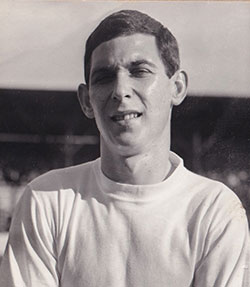
Rhyl-born Barrie Rees followed in the footsteps of South-Walian Keith Webber by swapping life at Goodison Park for the Goldstone Ground. As with his compatriot’s life, Barry's would end prematurely.
Barrie (often written, incorrectly, as Barry in contemporary sports reporting) was born on 4 February 1944 and lived on Mayfield Grove, attending Christchurch Junior School and Glyndwr Secondary School. In 1959, as a 15-year-old, he attained Welsh schoolboy honours as a forward in a Wales-Ireland match played in Bangor. Rhyl FC of the Cheshire League had him on amateur forms but, on the recommendation of the Toffees’ man in North Wales, Freddie Bennett, he was invited to join the Goodison roster and by the summer of 1960 he was making regular appearances as an amateur in the club’s B team. He continued with his plumbing apprenticeship (the Club purchased his tools for him) before turning professional for the Blues in 1961.
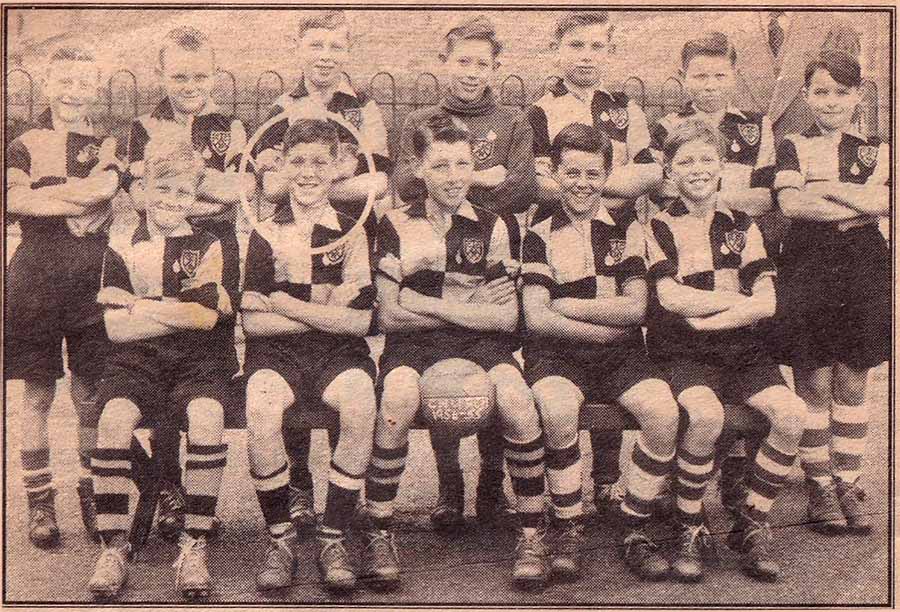
Christchurch school team 1954-55 (Barrie circled)
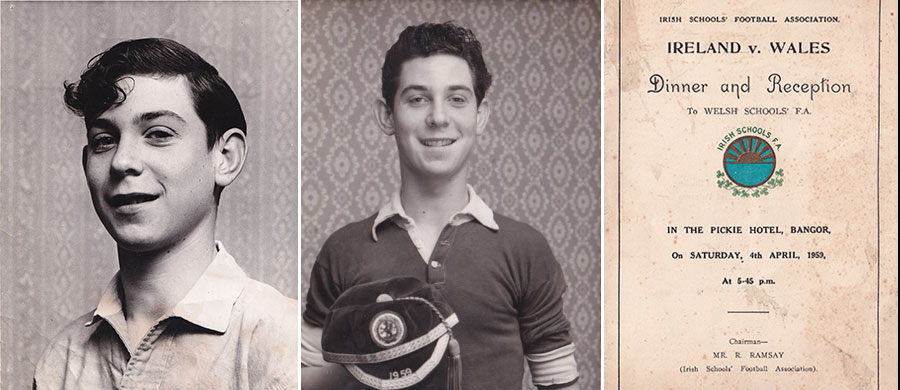
Left: Barrie as a teenager; Middle: Barrie Rees Wales Schoolboys International; Right: Brochure for Wales vs Ireland schoolboys match dinner April 1959
Clubmates including Colin Harvey, Derek Temple and Colin Green remember Barrie as an extremely versatile player whose greatest gift was his height, athleticism and stamina. Indeed, during his time with Everton, he was deployed as a forward, wing-half (midfielder) and right back - a proto-Alan Harper, if you will. Harvey believes that, ultimately, Barrie would have been best suited to a wing-half role in which he could use his formidable engine to get up and down the pitch to great effect. Temple recalls that Barrie had a streak of fire in his belly - as evidenced by a two-week suspension handed down for striking a Manchester City opponent in a reserve team match.
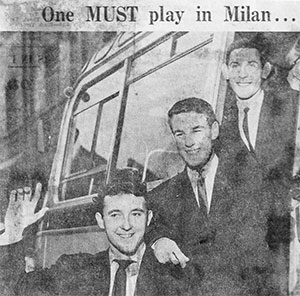
Barrie, Roy (Vernon) and Colin (Harvey) before the Inter match
Along with Harvey and Roy Parnell, Barrie was shortlisted to make his Everton debut in the San Siro stadium. He stayed with Harvey’s house the night before the squad travelled from Manchester Airport to Italy for the European Cup tie. Ultimately Harry Catterick plumped for Harvey against Inter, but Barrie was handed his senior bow a month later, replacing the injured Alex Young at centre-forward against West Ham United at Upton Park. He scrambled the ball home from close range on 32 minutes and, according to Michael Charters in the Echo, ‘There was no disguising the youngster’s joy’. Sadly, it was not enough to prevent a 4-2 defeat by the Hammers. However, according to The People: ‘Besides keeping experienced Ken Brown at full stretch all afternoon he [Rees] tested Standen at every chance’.
He was back wearing the Number 9 shirt – and on the scoresheet again – in February 1964, when recalled to the side for a routine home win over Birmingham City (keeping his place for the subsequent fixture). At the end of the season, Barrie was in the group selected to tour Australia for 4 weeks. The utility man made a good impression – grabbing a hat-trick against a Queensland XI – but found the extensive travelling and time away from home draining (he was close to his family), as evidenced by a letter he wrote to his parents back home.
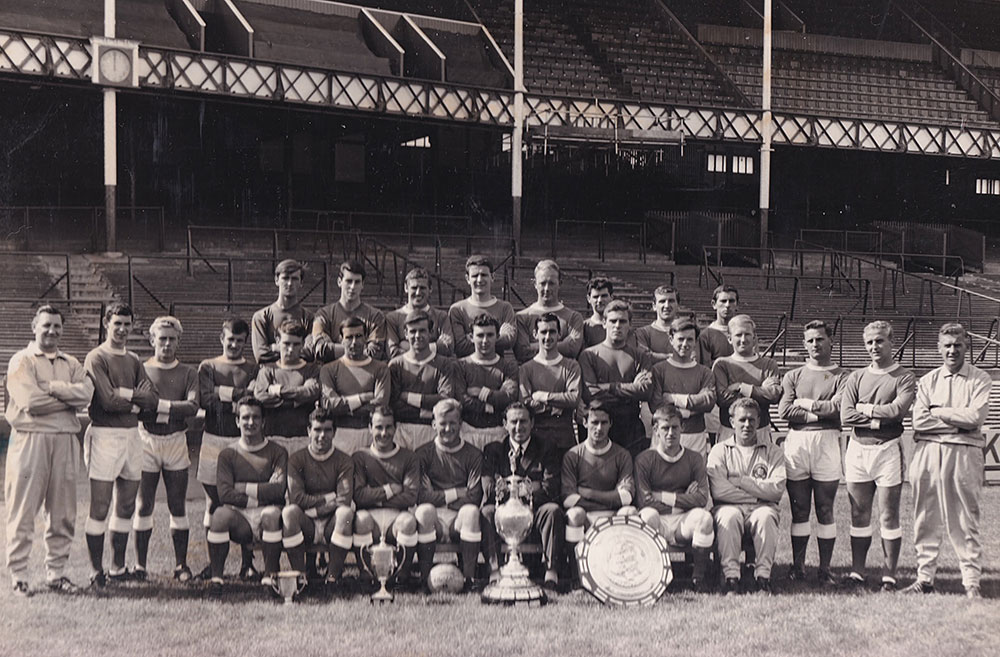
Everton squad in 1963 with Barrie the furthest player on the left
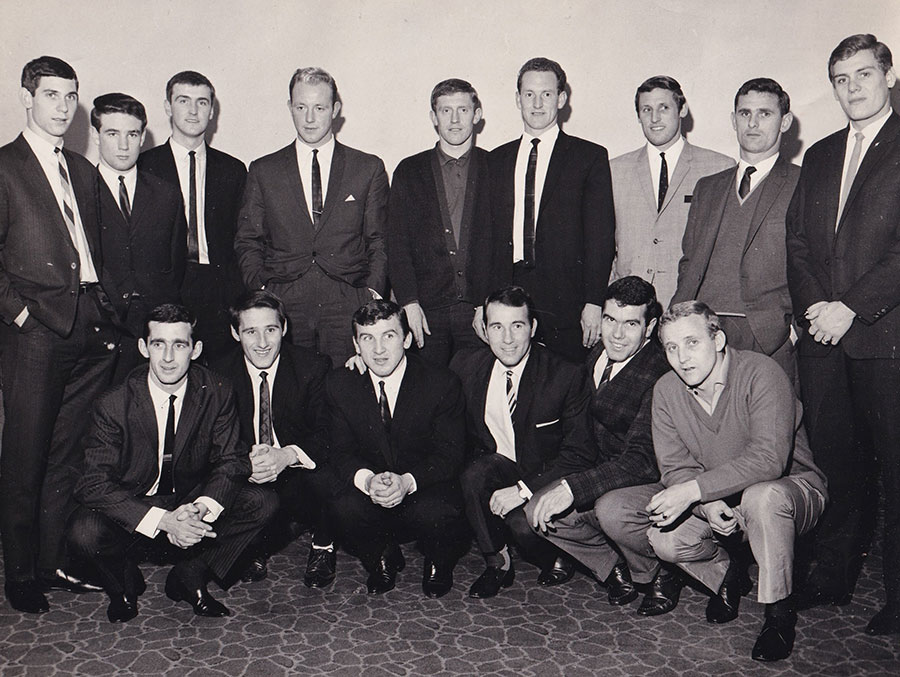
1963-64 Everton squad with Barrie far left
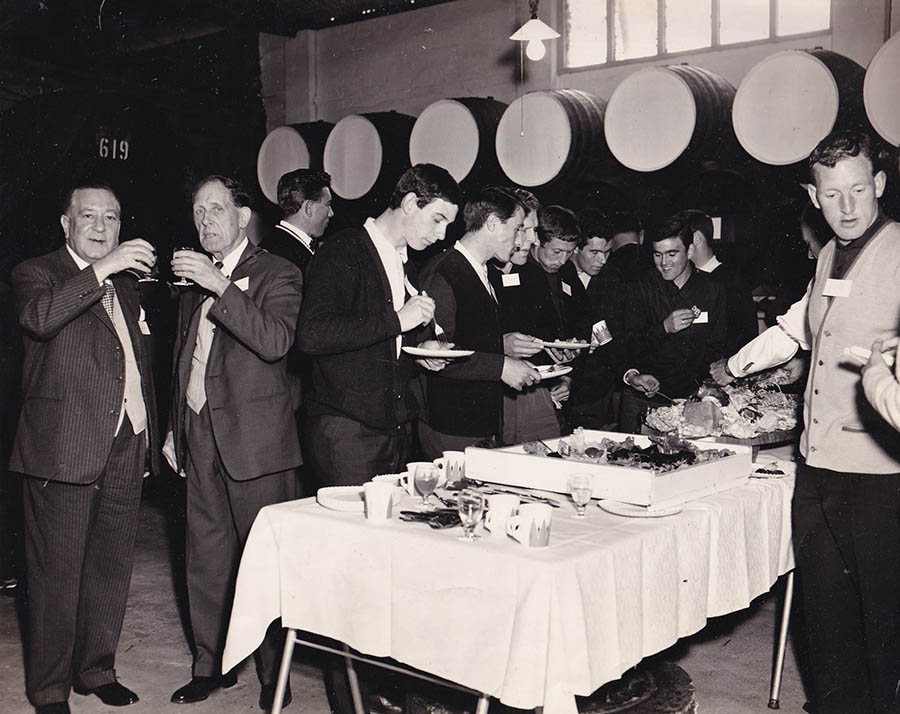
Tucking into lunch at a New South Wales winery in 1964
Back in Britain, the Welshman was consigned to reserve team duties until November 1964, when drafted in for the out-of-form Alex Parker, with Leeds United the visitors. The match has entered folklore as ‘The Battle of Goodison’ - a brutal encounter that would test even the most seasoned pro. Injured during the one-nil home defeat, Barrie found himself out of first-team favour when fit again (although he had a call-up to the Wales Under-23 squad).
With a deep squad, Everton were prepared to part company when an offer of £8,000 plus add-on clauses was tendered by Brighton and Hove Albion. The Seagulls had him watched several times and moved quickly to secure his services, when made aware of the interest of rival clubs. Harry Catterick told reporters: ‘We felt that Rees would stand a better chance of regular League football if we let him go to Brighton. Our position is that we have many fine youngsters coming through from our youth policy and we did not wish to stand in Rees’s way.’
Although reluctant to uproot himself from North Wales and Merseyside, Barrie headed south to meet Seagull’s manager Archie Macauley and was persuaded to sign on the dotted line. A fairly quiet young man off the pitch, he made an immediate impact on it. In his 12 appearances as a wing-half, it was abundantly clear that Brighton had signed a player with potential to develop into a mainstay of the team and a possible full Wales international. Tall, happy to ‘mix it’ and possessing a natural talent for getting forward, he shone in the Fourth Division. In his memoir, former Albion chairman Dick Knight wrote that Barrie was ‘one of Brighton’s classiest-ever players’.
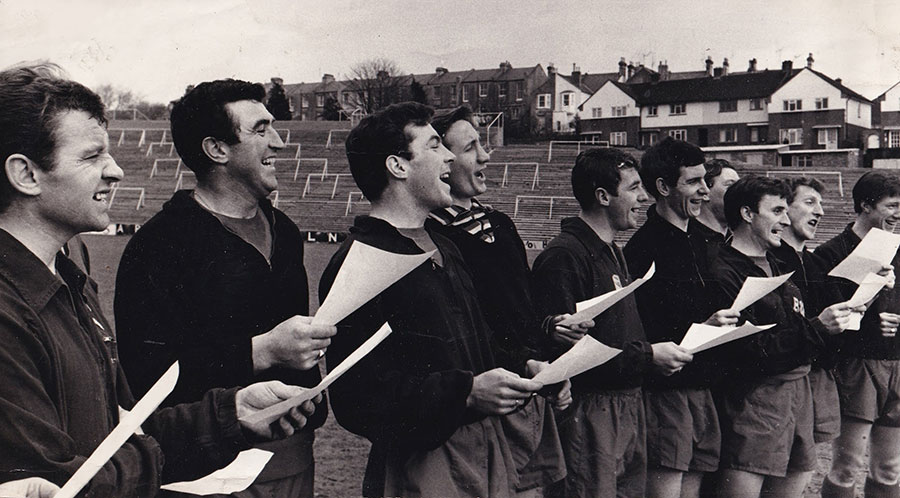
Bursting into song at Brighton & Hove Albion
Barrie turned 21 a month after his move south and would use his Austin Mini (freshly purchased from clubmate Bobby Baxter) to make the long journey back to visit family, when opportunities arose. He drove north through the early hours of 27 March 1965 to celebrate his uncle’s large win on the football pools. Tragically, at around breakfast time, he pulled out into the path of an oncoming lorry on the A5, near Nuneaton (possibly in trying to avoid hitting the back of stationary traffic ahead of him). He died afterwards in hospital from the injuries sustained in the collision with the HGV and a tree (the lorry driver was treated for shock and minor injuries). In a parallel with Keith Webber (who had swapped moved from Everton to Brighton in 1963), Barrie was found, during the post-mortem examination, to have an enlarged heart. At the inquest into his death, it was stated that this hitherto undiagnosed medical issue may have impacted his chances of survival from the accident.
It was a tragic end to a life that held so much promise. To add to the poignancy, Barrie’s girlfriend, Barbara, gave birth to their child, a son, seven months later. Although he passed away nearly six decades ago, those who knew Barrie Gwyn Rees, or saw him play football, retain the fondest of memories of a talented and much-loved young man.
Acknowledgements
Sincere thanks to Barrie’s younger sister, April Rathbone (who remains an avid Evertonian) for use of images and his brother, Geraint Rees.
Also, my thanks go to Geraint Rees, Steve Zocek, Colin Harvey, Derek Temple, Colin Green and Billy Smith.
Various newspaper items were sourced from bluecorrespondent.co.uk and Find My Past
evertonresults.com by Steve Johnson was used for match statistics
Evertoncollection.org.uk for EFC board minutes.
Further reading: Wet Socks and Dry Bones (Ghosts of the Goldstone Ground) by Nic Outterside
Reader Responses
Selected thoughts from readersEither no responses have been submitted so far to this article or previous submissions are being assessed for inclusion.
Add Your Thoughts
Only registered users of Evertonia can participate in discussions.
Or Join as Evertonia Member — it takes just a few minutes and will allow you to post your thoughts on artices across the site.

